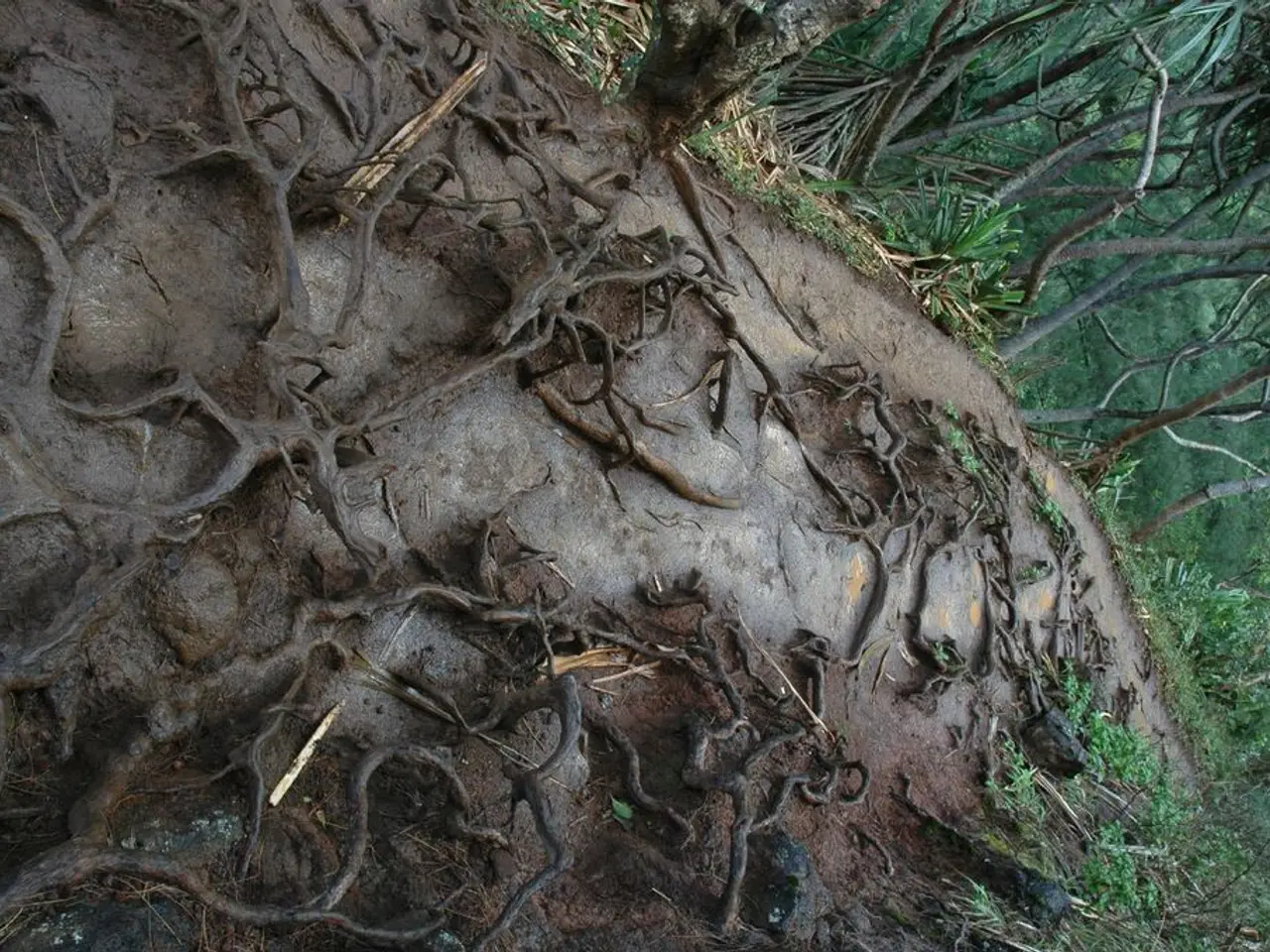Soil Enrichment via Organic Breakdown: Nature's Beneficial Contribution
In the quest to nurture a thriving garden, understanding the importance of soil health is paramount. One particular challenge lies in dealing with clay soil, which can be dense and difficult to manage. However, with a few simple strategies, it's possible to transform clay soil into a fertile and productive growing medium.
One effective method is contouring the land, which helps slow down and manage water in clay soil, allowing it to oxygenate as it filters through the high and low points. This process, combined with the addition of certain plants, can greatly improve the structure of clay soil.
Plants known as clay-busting plants, such as artichoke, daikon radish, cowpea, mustard, and annual sunflower, have strong root systems that can break up compacted clay soil. These plants, when used as cover crops, interplanted with other crops, or allowed to self-sow and become semi-permanent sources of chop-and-drop mulch, contribute to improving soil structure by creating channels and pore spaces through root growth.
Tap root crops like potatoes and carrots, legumes such as peas, beans, clover, sunn hemp, and cowpeas, and cover crops like ryegrass are all beneficial in this regard. Tap root crops physically break up compacted or clay soils, while legumes naturally increase soil nitrogen fertility by fixing atmospheric nitrogen into the soil via root nodules containing nitrogen-fixing bacteria. Cover crops, with their fibrous root systems, hold upper soil layers, reduce erosion, and add organic matter, boosting microbial activity and soil health.
Vetiver grass, known for its exceptionally deep, dense root network, is another valuable addition. Its roots can stabilise soil on slopes and embankments, enhance soil structure, and prevent soil erosion effectively.
Improving clay soil is a gradual process that requires time and patience. As plants die, their roots can help break down rocks into smaller pieces, forming soil. The breakdown of plants is essential to nature's capacity for regeneration, as it helps retain moisture and return vital nutrients to the soil.
Fungi, detritavores, and microscopic bacteria play a role in breaking down dead plants, aiding in the overall process of soil improvement. Aerating the soil by injecting air pockets can also improve drainage, break up compaction, and invite soil microorganisms.
Adding soil amendments like compost, green manure, leaf mould, livestock manures, and worm castings can further help improve the structure of clay soil. These organic materials add biomass, enhance water infiltration and retention, and support beneficial soil microbial life.
In summary, combining tap-rooted plants, legumes, and fibrous-rooted cover crops is a widely effective strategy to break down soil compaction, improve soil structure, and enhance fertility naturally. By incorporating these practices, gardeners can create a thriving, sustainable garden in even the most challenging of soils.
Education and self-development in the field of gardening can be attained by understanding the strategies for improving clay soil. This includes contouring the land, planting clay-busting plants, utilizing tap root crops, legumes, and cover crops, and incorporating soil amendments like compost. These techniques help break down soil compaction, improve soil structure, and enhance fertility, enabling the creation of a thriving, sustainable garden.




